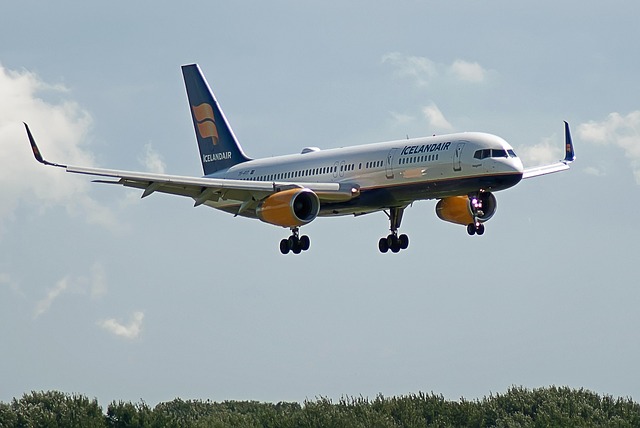Understanding Fare Classes and Their Impact on Price
Fare classes determine how airlines price seats, govern change and refund rules, and influence baggage or upgrade eligibility. This short overview highlights why knowing fare buckets can help travelers manage cost expectations and choose options suited to their destination, disability needs, or holiday plans.

Airlines sort seats into fare classes that bundle price, rules, and perks. These classes—often shown as letter codes—affect how much you pay and what flexibility you get, from cancellations to upgrades. Understanding fare classes helps travelers match a ticket to priorities such as lowest upfront cost, flexible travel dates, checked baggage, or wheelchair assistance. For certain destinations and special travel types (holiday seasons, long-haul flights to places like the Maldives, or trips tied to visiting historical sites or ruins) fare distribution and demand can push prices higher or lower, making it important to read fare rules and compare options across booking channels.
How do fare classes affect flight pricing and distribution?
Fare classes are essentially inventory buckets. Airlines assign each seat a booking code that indicates its rules and price tier; when demand rises, the number of seats available in lower fare buckets shrinks and more expensive buckets are offered. This distribution mechanism helps explain sudden price jumps and why two passengers on the same flight may pay different amounts. For travelers, knowing the class can indicate baggage allowances, change fees, and upgrade eligibility—factors that change the true cost beyond the ticket price. Tools like metasearch engines can show available fare classes and help compare flight inventory across providers.
What role does destination and seasonality play in fare rules?
Destination influences fare structures through demand patterns linked to seasonality and local attractions. Popular holiday destinations, beach swimming spots, or cultural traditions attract higher steady demand; flights to island destinations such as the Maldives often show limited low-fare inventory during peak holiday windows. Likewise, travel to a destination with a major historical site or a festival can trigger higher fares well in advance. Understanding when your destination experiences peak demand helps you select fare classes that balance price and flexibility—book earlier for limited low-fare seats or choose flexible classes when plans are uncertain.
How do amenities and accessibility options affect fare choices?
Some fare classes include amenities that matter to specific travelers: extra legroom seats, meal service, or priority boarding. For passengers requiring wheelchair assistance or other accessibility services, the fare class may determine how easily changes or refunds are handled; many airlines apply consistent accessibility support regardless of class, but cancellation and rebooking rules can vary. For travelers considering stateroom-like comfort on connecting cruises or long-haul segments, premium classes offer a different set of inclusions that impact overall trip cost. Always check the fare rules for service provisions and any associated fees.
Do travel motivations like science trips or visiting ruins influence booking strategy?
Purpose-driven travel—research trips to a planet simulation lab, science exchanges involving microgravity demonstrations, or excursions to archaeological ruins and historical sites—can follow different booking logics. Specialized trips may need flexible fares to accommodate schedule changes, or higher classes for longer haul comfort if weightlessness training or lab equipment is involved. Group distribution, equipment transport, and coordination with event organizers can affect preferred fare classes and the timing of bookings. Align the fare choice with the logistical needs of your itinerary rather than just the lowest upfront price.
Can external factors like delivery service limitations, battery rules, or waterway connections change fare decisions?
Practical constraints sometimes push travelers to higher fare classes. Restrictions on transporting batteries (spare lithium batteries) or specialized gear can require advance coordination and occasionally incur fees; some fare classes include checked baggage allowances that simplify these concerns. If your itinerary requires connecting distribution via local delivery service, waterway transfers, or stateroom-to-air connections on combined trips, consider fares that permit smoother changes or refunds. Similarly, travel involving unique transfers—on the earth-facing side of remote islands or to research stations—may benefit from more flexible ticketing despite higher initial cost.
| Product/Service | Provider | Cost Estimation |
|---|---|---|
| Round-trip Transatlantic Economy (example) | Google Flights (search) | $400–$900 depending on season and fare class |
| Round-trip Transatlantic Business | Expedia (OTA) | $2,000–$5,000 depending on carrier and booking class |
| One-way Domestic Economy | Skyscanner (metasearch) | $50–$300 depending on route, timing, and fare bucket |
Prices, rates, or cost estimates mentioned in this article are based on the latest available information but may change over time. Independent research is advised before making financial decisions.
Real-world pricing insights and practical tips
Comparing providers and fare classes reveals that the cheapest visible ticket may exclude baggage, seat selection, or flexible changes; these add-ons can make a higher fare class more economical in practice. Booking tools show ranges rather than fixed prices; for holiday periods or to in-demand destinations, expect fewer low-fare seats. If your trip involves special needs—wheelchair service, transporting batteries or scientific equipment—factor in provider policies and possible service fees when evaluating total cost. Use price alerts, flexible date search, and check both airline websites and OTAs to understand available fare classes and their true cost implications.
Conclusion
Fare classes shape both the sticker price and the overall travel experience by bundling rules, flexibility, and inclusions. Knowing how airlines distribute inventory and how destination demand, amenities, accessibility needs, and practical constraints affect pricing helps travelers choose fares that meet their priorities. Reviewing fare rules and comparing across real providers offers a clearer picture of what a ticket will truly cost for your chosen itinerary.





